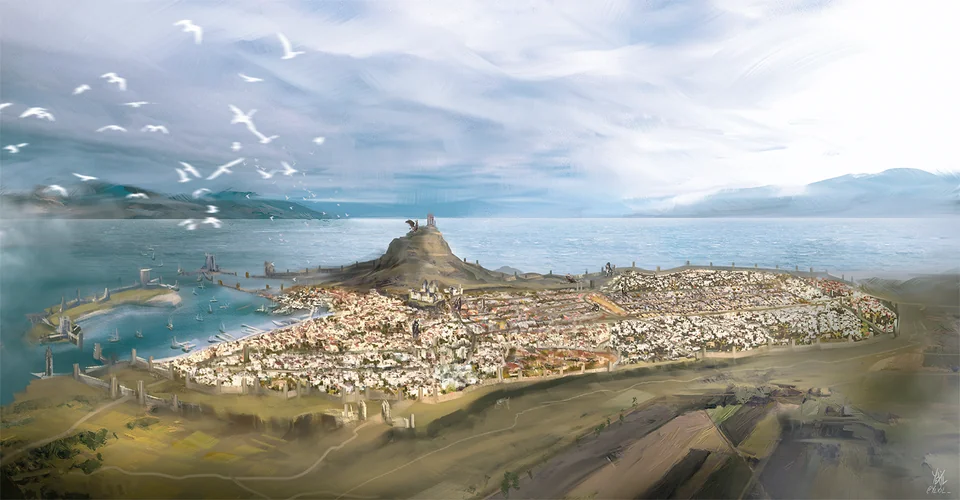Half-Elf
Half-Elf Traits
Your half-elf character has some qualities in common with elves and some that are unique to half-elves.Ability Score Increase
Your Charisma score increases by 2, and two other ability scores of your choice increase by 1.Size
Half-elves are about the same size as humans, ranging from 5 to 6 feet tall. Your size is Medium.Speed
Your base walking speed is 30 feet.Darkvision
Thanks to your elf blood, you have superior vision in dark and dim conditions. You can see in dim light within 60 feet of you as if it were bright light, and in darkness as if it were dim light. You can’t discern color in darkness, only shades of gray.Fey Ancestry
You have advantage on saving throws against being charmed, and magic can’t put you to sleep.Skill Versatility
You gain proficiency in two skills of your choice.Languages
You can speak, read, and write Common, Elvish, and one extra language of your choice.Half-Elf Variants
Some half-elves in Faerûn have a racial trait in place of the Skill Versatility trait. Your half-elf character can forgo Skill Versatility and instead take a trait based on your elf parentage:- A half-elf of wood elf descent can choose the wood elf’s Elf Weapon Training, Fleet of Foot, or Mask of the Wild.
- A half-elf of moon elf or sun elf descent can choose the high elf’s Elf Weapon Training or Cantrip.
- A half-elf of drow descent can choose the drow’s Drow Magic.
Basic Information
Biological Traits
Half-elves are a diverse lot, given the number of combinations of elf subraces and human ethnicities in their ranks. Most of them consider their dual nature a blessing more than a disadvantage, because it gives them a set of capabilities and a perspective on the world that full-blooded humans and elves can’t hope to match.
At the same time, the mixed heritage of half-elves dictates that they make an effort to fit in with humans or elves when possible. For instance, half-elves born and raised in human settlements tend to have human names, while half-elves in elven communities generally have elven names. In some places half-elf children are named according to the “other” parent, or with a mix of human and elven names, as a way of setting half-elves apart from the rest of their community.
Civilization and Culture
Naming Traditions
Half-elves use either human or elven naming conventions. As if to emphasize that they don’t really fit into either society, half-elves raised among humans are often given elven names, and those raised among elves often take human names.
Culture and Cultural Heritage
Half-elves have no lands of their own, though they are welcome in human cities and somewhat less welcome in elven forests. In large cities in regions where elves and humans interact often, half-elves are sometimes numerous enough to form small communities of their own. They enjoy the company of other half-elves, the only people who truly understand what it is to live between these two worlds.
In most parts of the world, though, half-elves are uncommon enough that one might live for years without meeting another. Some half-elves prefer to avoid company altogether, wandering the wilds as trappers, foresters, hunters, or adventurers and visiting civilization only rarely. Like elves, they are driven by the wanderlust that comes of their longevity. Others, in contrast, throw themselves into the thick of society, putting their charisma and social skills to great use in diplomatic roles or as swindlers.
History
In the distant past, half-elves were scarce because humans and elves came into contact only infrequently. The ancient elven kingdoms of Cormanthyr and Myth Drannor had significant populations of half-elves. It is only in the past thousand years or so, as the races have intermingled more and more, that the number of half-elves has increased so that they are now found throughout Faerûn.
Not surprisingly, half-elves enjoy the company of others of their kind, such that where half-elves congregate, they are likely to be joined by others. Most of the half-elves in the North and along the Sword Coast are of moon elf heritage mixed with Illuskan or Tethyrian blood. In other parts of Faerûn, half-elves have significant communities in the Yuirwood and throughout Aglarond. Aquatic half-elves are found along the coasts, including near Aglarond, the Dragon Coast, Impiltur, Sembia, and the Vilhon Reach. Drow half-elves are most numerous in the nation of Dambrath, which was conquered by the dark elves years ago, and in the Underdark, where House Ousstyl of Menzoberranzan is particularly infamous for having mated with humans.
Interspecies Relations and Assumptions
An elf who looks upon a half-elf sees a human, and a human who beholds the same person sees an elf. Though this characterization is simplistic, it gets to the heart of what it means to be a half-elf in Faerûn.
To elves who have an extreme viewpoint on the matter, half-elves are emblematic of the decline of elven civilization, a dilution of the race’s heritage and culture that will lead to its eventual dissolution. To the humans at the other end of the spectrum, half-elves have an unfair advantage over their fully human peers, and are seen as privileged or favored regardless of the actual circumstances of their birth.
For most folk in Faerûn, the issue isn’t so cut and dried. Half-elves are generally tolerated wherever they go, or wherever they take up residence — with the proviso that a society that doesn’t look kindly on elves or humans is likely to feel the same way about someone who has the blood of both races. Conversely, a society that holds humans or elves in high esteem doesn’t usually bestow the same status on half-elves (though such individuals are generally not ostracized).


